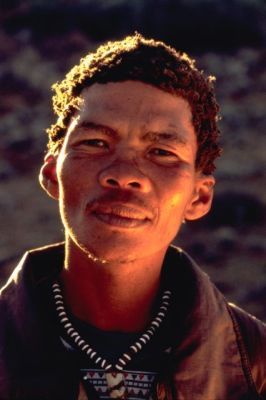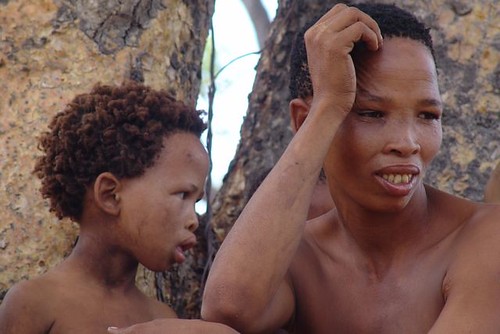| Reply to Thread New Thread |
|
|
#1 |
|
|
|
|
|
|
|
#3 |
|
|
What do you mean "san"?
Han Chinese are mixed. They make up 92% or more of China's ethnic groups. You should already know that Han people are not homogenous. They practice a similar custom/tradition due to assimilation. The Han Chinese are known for their extreme "assimilation policy" throughout their thousand years history. |
|
|
|
|
#4 |
|
|
What do you mean "san"? |
|
|
|
|
#5 |
|
|
Right, an interesting theory... slant eyed Africans migrated to Siberia and then were trapped in an ice age refuge where selective pressures made them even more slant eyed as well as depigmenting them. It's an interesting theory but I don't think there is any uniparental migration pattern that can account for it. I think East Asians are closer to non-slanty intermediate populations.
|
|
|
|
|
#6 |
|
|
Right, an interesting theory... slant eyed Africans migrated to Siberia and then were trapped in an ice age refuge where selective pressures made them even more slant eyed as well as depigmenting them. It's an interesting theory but I don't think there is any uniparental migration pattern that can account for it. I think East Asians are closer to non-slanty intermediate populations.    I think we are all connected to a certain degree, if we were not then mating(opposite sexes lol)) with each other would be a impossibility. However the San or Khoisan being the ancestors of East Asians, I have my doubts as well. But who knows? At the same time we cannot deny the similarities of appearances and facial characteristics of the population being discussed here. At the same time some believe Europeans and others of their ink are the offshoot of people from the horn, again due to cranial and facial characteristic and genetics. Again that is all speculation? |
|
|
|
|
#7 |
|
|
I won't argue for or against the slantiness aspect of it, by I would expect to see some Y or mtDNA continuity...
http://www.isogg.org/tree/ISOGG_YDNATreeTrunk.html Between A and O are so many intermediate round eyes. 
|
|
|
|
|
#8 |
|
|
I won't argue for or against the slantiness aspect of it, by I would expect to see some Y or mtDNA continuity... I will book mark that link you provided and study it well. |
|
|
|
|
#9 |
|
|
Hmm, not sure the nature of the question regarding Cushitics or Nilotics? I was more trying to illustrate that Haplogroup K(xLT) is upstream of O, so round eyed Oceanic people, like Aboriginese and Pacific Islanders, are closer to traditional mongoloid haplogroup O, than San are... closer geographically too.
I tend to think the similar eye features are concurrent evolution, like blondeness in Europeans and Pacific Islanders. |
|
|
|
|
#10 |
|
|
Hmm, not sure the nature of the question regarding Cushitics or Nilotics? I was more trying to illustrate that Haplogroup K(xLT) is upstream of O, so round eyed Oceanic people, like Aboriginese and Pacific Islanders, are closer to traditional mongoloid haplogroup O, than San are... closer geographically too. The CF(xDE) haplogroup was the common ancestor of all people who migrated outside of Africa until recent times. The defining mutation occurred 31-55,000 years bp in North East Africa and is still most common in Africa today in Ethiopia and Sudan I know your reasons for the San, and i understand it. However i wanted to ask about what i read from the link in reference to east Africans particularly, in other words which group in Ethiopia and Sudan display the Haplogroup CF(xDE) today. I am just curious? P.S. I know my question is outside the subject matter that being discussed here, so i don't want to hijack this thread, therefore keep the answer simple or clear or just provide the link to answer my inquiry. Thanks |
|
|
|
|
#11 |
|
|
Well that's a para group of C and F that doesn't exist in modern populations, but F are scattered around in Europe and (mainly South) Asia. I don't know if these are represented indigenously in any modern African populations. Do you have some examples? A lot of F from early testing actually turned out to be G or some other child clade. I have STR matches at Ancestry.com showing F which is ridiculous of course because I am G and positive for several subclade SNP's.
I recall seeing F mentioned in a thread about some Nubian ancient DNA samples recently? I wonder what other SNP's they tested for. It could be indigenous or a West Asian back migration. It's an interesting subject, but we should probably start another thread, as it is off topic for San and Han. |
|
|
| Reply to Thread New Thread |
«
Previous Thread
|
Next Thread
»
| Currently Active Users Viewing This Thread: 1 (0 members and 1 guests) | |
|
|








 Linear Mode
Linear Mode


